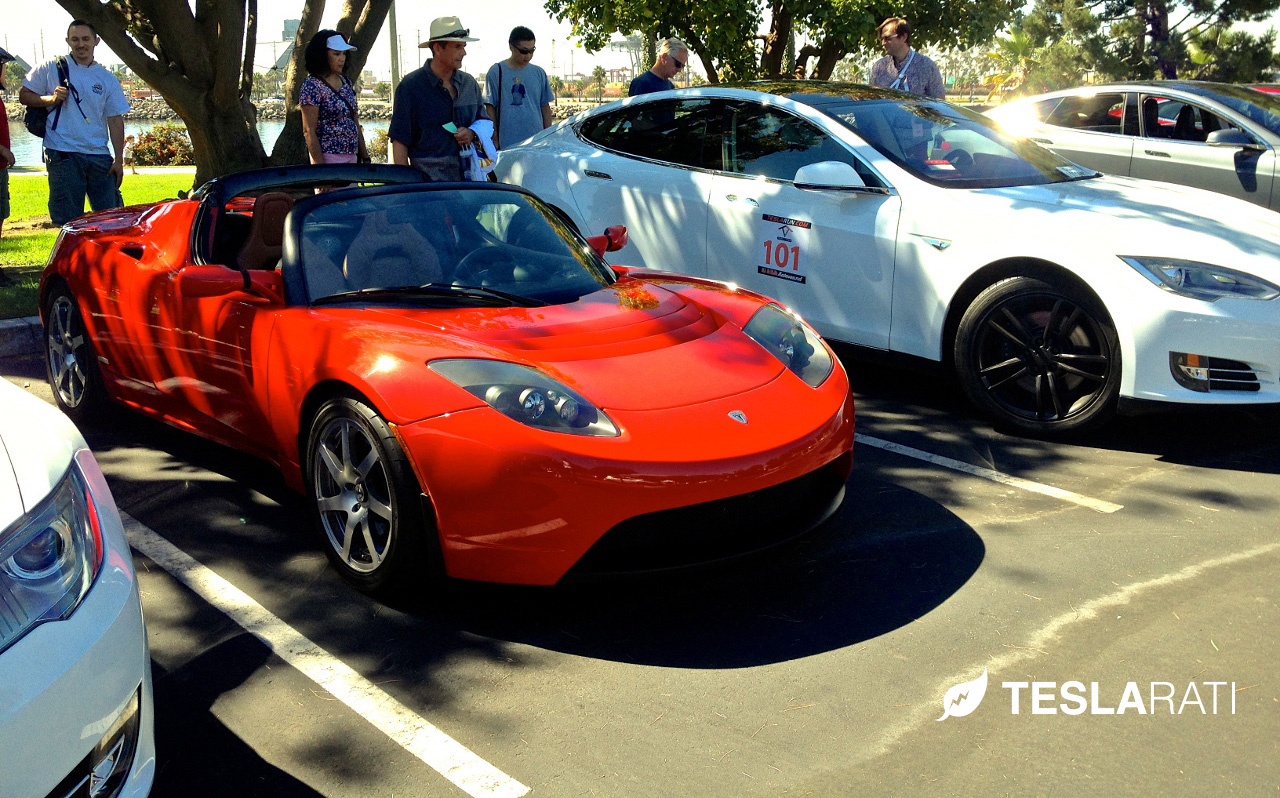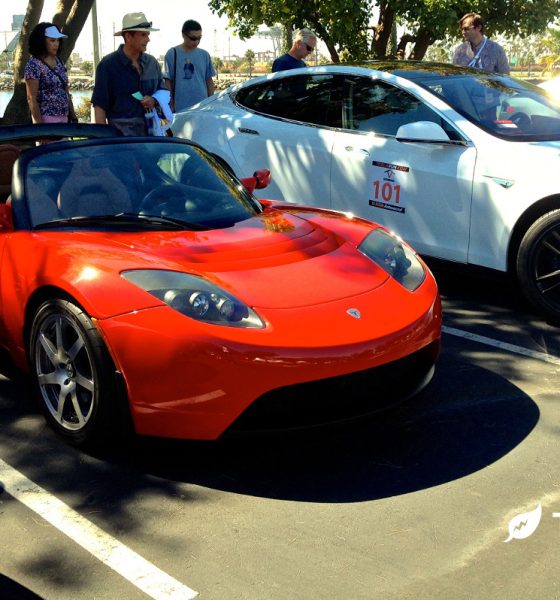

News
History Lesson: The evolution of the electric car [Infographic]
The Institute for Local Self-Reliance (ILSR) recently released an in-depth report on electric vehicles. The ILSR’s report, Choosing the Electric Avenue – Unlocking Savings, Emissions Reductions, and Community Benefits of Electric Vehicles, authored by John Farrell, is a treasure trove for those looking to learn more about electric vehicles. One particular section of ILSR’s report provides a helpful history lesson to better understand the evolution of the electric car.
Farrell writes, “Electric cars aren’t new. At the dawn of the U.S. auto industry in the late 1800s, electric vehicles outsold all other types of cars. By 1900, electric autos accounted for one-third of all vehicles on U.S. roadways. Of the 4,192 vehicles produced in the U.S. and tallied in the 1900 census, 1,575 were electric.”
Some well-recognized names were heavily involved with electric cars early on. “Electric vehicles sales remained strong in the following decade and provided a launchpad for fledgling automakers, including Oldsmobile and Porsche, that would go on to become industry titans. Even Henry Ford partnered with Thomas Edison to explore electric vehicle technology. Battery-powered models, considered fast and reliable, sparked a major transportation renaissance.”
 |
Above: Porsche’s first car in 1898, the P1, was electric (Source: Upworthy via Porsche)
That said, electric cars fizzled out as gas-powered cars gained prominence: “the momentum shifted over the first few decades of the 20th century, as the electric starter supplanted hand-cranking to start gas engines. The prices of those models dropped. A network of inter-city roadways enabled drivers to travel farther — more easily done in those days in gas-powered vehicles — and the discovery of domestic crude oil made gasoline cheaper. The internal combustion engine gained a superiority that would persist for decades.”
Fast forward: “Nearly 100 years later, a second wave of electric vehicles arrived, driven by California’s zero-emissions vehicle policy in the late 1990s. Unfortunately, it faltered. The enthusiasm of electric vehicle owners couldn’t overcome the reluctance of cash-flush automakers to invest in alternatives to gas-powered vehicles. Automakers also mounted successful lobbying efforts to weaken the zero-emissions vehicle policy.”
Above: Top 8 electric cars ahead of their time (Youtube: FIA Formula E Championship)
This short-lived second wind for electric cars came to an abrupt end when, “In 1999, General Motors ended production of its own promising electric vehicle, the EV1, after just three years. The automaker removed all 1,100 models from the roads, despite outcry from their drivers. It blamed its pivot away from electric vehicle technology on the EV1’s 100-mile range and the high cost of development compared to sales. Oil giants, still powerful political lobbies, also opposed electric vehicle innovation.”
However, it finally appears that the electric car is here to stay (and thrive) at last. “Nearly two decades later and 120 years after its introduction, the electric car is making an unmistakable comeback. This time, it’s aided by better technology as well as environmentally sensitive consumers and policymakers looking to supplant fossil fuel use with renewable electricity.”
The ILSR’s report concludes that much of the electric vehicle’s recent turnaround is due to the efforts of Elon Musk and Tesla. But, it’s not just Tesla, the past few years have been encouraging industry-wide: “Sales of electric cars are growing… In just the first quarter of 2011, for example, more electric cars were sold than General Motors leased throughout the entire 1990s. In 2016, U.S. auto dealers recorded 158,000 plug-in vehicle sales — up more than 30 percent from 2015. The trend shows no signs of stopping.”
For a timeline of EV milestones dating all the way back to 1832, be sure to check out this handy infographic…
Infographic
 |
===
Note: Article originally published on evannex.com, by Matt Pressman
Source: Institute for Local Self-Reliance / Infographic: Nikkei Asian Review

Elon Musk
Elon Musk’s Biggest Revelations on AI, Robots, and the Future of Work from the Moonshots Podcast

Elon Musk’s appearance on the Moonshots with Peter Diamandis podcast was packed with bold predictions, candid admissions, and surprising tech insights. The nearly three-hour conversation covered everything from artificial intelligence to humanoid robots, geopolitics, and the future of work. Here are the top 10 most intriguing takeaways:
-
Aggressive AGI Timeline Predictions
Musk offered a detailed view on when artificial general intelligence (AGI) could emerge, suggesting it may arrive sooner than many expect, emphasizing both transformative potential and risks.
-
U.S. vs. China in the AI Race
He discussed the strategic competition between the United States and China over AI development, noting that geopolitical dynamics will shape how and who leads in the next decades.
-
Future of Job Markets
Musk touched on how AI and automation could reshape employment, predicting massive boosts in productivity alongside potential disruptions in traditional work structures.
-
Clean Energy Transition
A recurring theme was the role of clean energy in future economies, with Musk reiterating the importance of scaling sustainable power generation and storage.
-
Humanoid Robots Are Coming
On the podcast, Musk elaborated on Tesla’s work on humanoid robots, hinting at timelines and applications that go beyond factories to general-purpose assistance.
-
Tesla Roadster “Last Human-Driven Car”
Outside the core discussion topics, Musk teased features of the upcoming Tesla Roadster — calling it “the best of the last of the human-driven cars” and suggesting safety won’t be its main selling point.
-
The Role of AI in Clean Energy and Robotics
Linking AI to both energy optimization and robotics, Musk explained how smarter systems could accelerate decarbonization and task automation across industries.
-
U.S. Innovation Leadership
Musk argued that maintaining American leadership in key tech sectors like AI, space, and robotics should be a national priority, with thoughtful policy and investment.
-
Job Creation vs. Job Elimination
While acknowledging automation’s disruptive effects, he also outlined scenarios where new industries and opportunities could emerge, particularly in AI, space, and advanced manufacturing.
-
Long-Term Vision for Humanity
Throughout the conversation, Musk revisited his long-term philosophical views — including a belief in humanity’s responsibility to become a multi-planetary and technologically empowered species.
Whether you agree with Musk’s optimism or not, the podcast offers a window into the thinking of one of the most influential figures in tech today, in and why his visions continue to spark debate and inspiration.
Elon Musk
Elon Musk just said some crazy stuff about the Tesla Roadster

Elon Musk appeared on the Moonshots podcast with Peter Diamandis today to discuss AGI, U.S. vs. China, Tesla, and some other interesting topics, but there was some discussion about the upcoming unveiling of the Roadster, the company’s electric supercar that will arrive several years after it was initially slated for release.
Musk made some pretty amazing claims about the Roadster; we already know it is supposed to be lightning-fast and could even hover, if Tesla gets everything to happen the way it wants to. However, the car has some pretty crazy capabilities, some of which have not even been revealed.
On the podcast, Musk said:
“This is not a…safety is not the main goal. If you buy a Ferrari, safety is not the number one goal. I say, if safety is your number one goal, do not buy the Roadster…We’ll aspire not to kill anyone in this car. It’ll be the best of the last of the human-driven cars. The best of the last.”
🚨 Elon on the Roadster unveiling, scheduled for April 1:
— TESLARATI (@Teslarati) January 6, 2026
Musk makes a good point: people who buy expensive sports cars with ridiculous top speeds and acceleration rates do not buy them to be safe. They hope they are safe in case of an emergency or crash, but safety is not at the forefront of their thoughts, because nobody buys a car thinking they’ll crash it.
The Roadster is truly going to push the limits and capabilities of passenger vehicles; there’s no doubt about that. Tesla plans to show off the new version car for the first time on April 1, and Musk has only hinted at what is possible with it.
Musk said back in November:
“Whether it’s good or bad, it will be unforgettable. My friend Peter Thiel once reflected that the future was supposed to have flying cars, but we don’t have flying cars. I think if Peter wants a flying car, he should be able to buy one…I think it has a shot at being the most memorable product unveiling ever. [It will be unveiled] hopefully before the end of the year. You know, we need to make sure that it works. This is some crazy technology in this car. Let’s just put it this way: if you took all the James Bond cars and combined them, it’s crazier than that.”
Production is set to begin between 12 and 18 months after the unveiling, which would put the car out sometime in 2027. Hopefully, Tesla is able to stay on track with the scheduling of the Roadster; many people have been waiting a long time for it.
News
Tesla launches hiring for Robotaxi program in its twentieth country
Overall, the hiring signals Tesla’s aggressive timeline for global dominance in autonomous mobility.

Tesla has launched a hiring initiative for its Robotaxi program in its twentieth country, as the company posted two new jobs in Thailand this week.
Tesla is hiring in Bangkok and Kowloon for the Vehicle Operator position, which is related to data collection, and is the first in Thailand, but the twentieth country overall, as the company tries to expand into other markets.
🚨 BREAKING: Tesla is hiring additional full-time Vehicle Operators in Bangkok, Thailand.
Previous openings were 6-month, part-time roles. These are equivalent to AI Safety Operator roles in the U.S. pic.twitter.com/R6LzoU1bos— Tesla Yoda (@teslayoda) January 5, 2026
Tesla has had active job postings for Vehicle Operator positions in the United States, India, Israel, Taiwan, Germany, the Czech Republic, Hungary, the UK, Finland, Switzerland, Sweden, the Netherlands, Austria, Spain, Norway, Italy, and Turkey in past listings.
These postings are not all currently available, likely because the roles have been filled.
Thailand is the most recent, and broadens the company’s potential path to expanding its ride-hailing program, which is only active in the United States in Austin, Texas, and the California Bay Area, so far.
These roles typically involve data collection, which assists in improving Autopilot and Full Self-Driving operation. Tesla’s self-driving programs utilize real-world data that is accumulated and stored, observing vehicle and traffic behavior, as well as tendencies that are performed by human drivers to help increase safety and overall performance.
Overall, the hiring signals Tesla’s aggressive timeline for global dominance in autonomous mobility. Although the company has several high-profile rivals and competitors in the field, it has established itself as a main player and a leader in the development of autonomous technology, especially in the U.S., as its FSD suite is refined on almost a weekly basis.
The Full Self-Driving suite is available in seven countries and territories currently, including the U.S., Canada, China, Mexico, Puerto Rico, Australia, and New Zealand. Its biggest goal for expansion is currently the European market, where regulatory hurdles have been the main bottleneck prolonging its launch on the continent.
Tesla has performed months of testing in various European countries, including France and Spain, and does have support in some areas from various regulatory agencies. However, the company is hoping to get through this red tape and offer its suite in Europe for the first time, hopefully this year.








